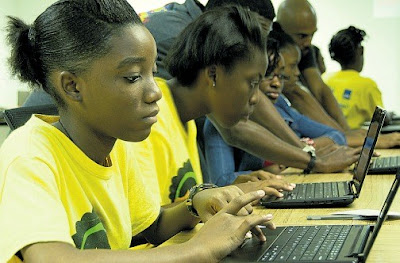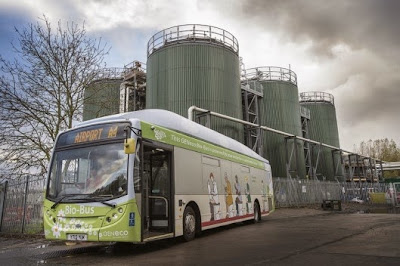Many
might dislike the idea of Robots coming to take our jobs, especially Americans,
who fear Robots will take away their menial jobs such as in the Fast Food
Industry by 2017 as predicted in my blog article
entitled “Fast
Food Robot taking over by 2017 - How Drones like Amazon and PrimeAir and not Humanoid
Robots will be the first Robots by 2015”.
But
automation is a slow process and using Robots will be initially expensive,
especially if the Robotic solution took time to research and develop. Any task
that’s simple, repetitive and hazardous and involves just tracking large
amounts of information accurately and moving goods from point A to point B is
definitely up for Robotic Automation.
Enter
the Robots of Australia, which are slowly taking over the country to do their
simple, repetitive, hazardous from milking cows to Mining as stated in the
article “Robot trucks do
the jobs Australians shun”, published 18 November 2014, BBC News.
 |
There’s
more to Robotics or Mechatronics as it’s called in Australia than their
representation in the Movie Pacific Rim. Far from just being killers of Kaiju,
in Australia, they’re becoming just as important as their role in the
end-of-the-world disaster movie!
Australian Robotic
Farmers – From removing weeds, checking on Fruit trees and Milking Cows
Australia's
wild, untamed wilderness is huge, wild and dangerous. Many Australians, despite
their wild beginnings as a nation, now live in relative comfort on the
coastline. They shun the difficult and dangerous work of farming as well as
Mining, preferring to do higher level jobs in a country that is mostly untamed
desert that extends for thousands of miles.
Not
to mention having a small population relative t the vast wilderness of
Australia, which is a challenge even when it comes to interconnecting this
nation’s Telecom Infrastructure, which requires novel thinking as noted in my blog article
entitled “Telecom
Providers and Australia - The Parent Trap Down Under”.
For
that reason, Robots are slowly taking over farming jobs across Australia. Prof Sukkarieh's has developed a giant Solar
powered Robot called Ladybird that uses Image recognition to detect weeds and
remove them. This does duty along with the Mantis, which is really a Robot that
detects when trees are ready to bear fruit.
Robots
such as these were once oddities and curios are now seriously being considered
for work on farm where there is a shortage of local labour which is being
temporarily augmented with labour from the East Indian Islands and labourers
from Thailand and mainland China.
But
as it’s expensive and dangerous to work on these remote farms, the high cost of
paying such labour means Robots, which can work for 24/7 at very low labour
costs and never get tired, complain except when they need maintenance, are
slowly looking to be the perfect fit for Australia's Labour Shortage.
Robots
that milk Cows aren't such a novel concept, but it's still amazing to watch
cost saunter up and be milked on their own. But what about Mining in Australia?
Can the process of extracting ore be done by Robots that so far look very
fragile and frail?
Robots in Mining – Robots
and Drones needed along with Drone Pilots,
Supervisors and Engineers
In
the initial stages, there will be need for Remote operators, as clearly these Robots
can't work unsupervised. Australians will still working in such large mines
owned by the many mining giants such as Rio Tinto...they just won't be lower
level workers, says Head of Innovation at mining at Rio Tinto John McGagh.
Already,
there's evidence of automation at the Australian Mines.
Most
of the Trucks that carry ore are slowly being driven by semi-autonomous systems
basically Robot and the same market that Mercedes-Benz is gunning for in 2017
with their self-Driving fleet of trucks as detailed in my blog article
entitled “Mercedes-Benz
Future Self-Driving Truck by 2017 – Robots promote Truck Drivers to Fleet
Managers as Self-Driving Trucks more efficient”.
This
means less manual labour and more Remote Operator of Trucks, Drilling
Equiptment and Ore Crushing equiptment. It
also translates to increased saving in use of chemicals in ore extraction and
most importantly Energy. Though it may be slivers of percentages saved in
expenditure, it translates to billions of dollars over long timescales.
Especially in Energy Usage, which Head of innovation at mining at Rio Tinto
John McGagh claims already gobbles up 5% of the world’s Energy Production for
Mining Activities just to satisfy China!
Undoubtedly,
there is already a demand for Drone Pilots. A similar demand is expected in the
US of A as the FAA (Federal Aviation Authority) is set to let Commercial Drone
flights become a reality as noted in my blog article
entitled “FAA
to allow Commercial Drones in 2015 - US$100,000 per year for 100,000 Drone
Pilot jobs for the next five years”.
Drones
are probably being used in the mining to survey large swathes of land and do:
1.
Inventory tracking of equiptment
2.
Remote mapping
3.
Inspections
4.
Prospecting
Again,
a similar comparisons can be drawn from BP (British Petroleum) use of Drone
contractor AeroVironment to fly unmanned Drones over the Prudhoe Bay in Alaska
for Oil Pipeline inspection and 3D Mapping as detailed in my blog article
entitled “FAA
to allow Commercial Drones in 2015 - US$100,000 per year for 100,000 Drone
Pilot jobs for the next five years”.
Australia Training Robot
Pilots – Programming from Early Childhood a necessary Skill for Future Pilots
Australia
may thus already be training their children and University Graduates with the
requisite skills to become Remote Operators of Robots and Drones, which are
technically a type of Robot. New skills are needed, such as mechatronics, an
amalgam of the skills of a Mechanical Engineer and Electronics Engineer skilled
in the Maintenance of Robots.
This
is already occurring from a very young age in Australia, with the Brisbane's
School of the Future Mechatronics teacher Megan Hastie teaching children the
Computer Programming skills necessary to pilot Robots remotely even as many of
her students are themselves remotely taught.
This
is amazingly similar to Jamaica's recent push in to training young girls in the
art of Computer and Robotics programming as a follow-up Workshop of the
successful Jamaican Girls Coding 2014 Summer Camp held in August 2014 as stated
in my blog
article entitled “Girls
Who Code Clubs Christmas eCard Project - Workshop for Software Coding Females
creating Evangelion Pilots passing on their knowledge”.
But unlike in the US of A, where many are
worried about Robots taking away their jobs, like any worker new on the Job, these
Robots will need supervisors. Australia is rapidly embracing this reality of Robots
doing that’s simple, repetitive and hazardous jobs for which no cheaper labour
solution exists.
Robots,
until they become AI (Artificially Intelligent), will need Australian Remote
Operator, Maintenance Engineers and Drone Pilots to guide their work. Not to
mention make sure that they don’t strike when they take their mandatory five
(5) minute maintenance break!









